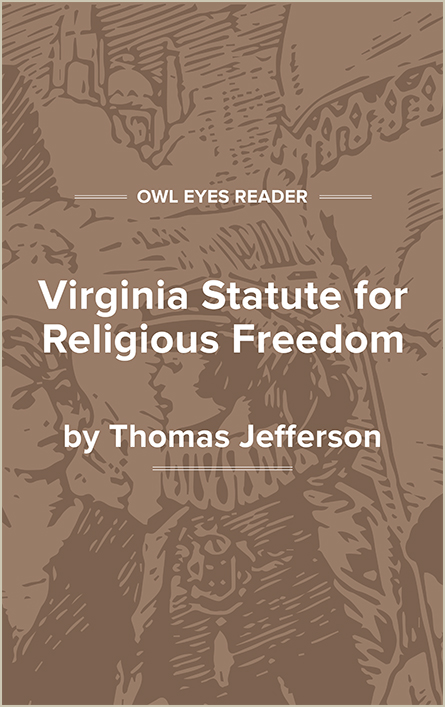Thomas Jefferson Biography
Thomas Jefferson was born on April 13, 1743, at Shadwell in Albemarle County, Virginia, the son of Jane Randolph and Peter Jefferson. He liked to emphasize his father’s frontier experiences as surveyor and cartographer instead of his family’s prominent antecedents. Educated in private schools and at the College of William and Mary, he was admitted to the bar in 1767 by his teacher, George Wythe. Throughout life, he studied agronomy, anthropology, archaeology, architecture, astronomy, biblical and legal history, botany, music, philology, and the latest scientific discoveries of his age. Between 1770 and 1810 he built Monticello, a Palladian mansion on the hilltop of his estate. He married Martha Wayles Skelton in 1772, and they had two daughters who attained maturity.
Jefferson was an organizer of political parties rather than an orator. His forte lay more in committee work than in personal correspondence or persuasion. In “his country” of Virginia, he served as burgess (1768-1775), delegate (1776-1779), and governor (1779-1781). His written address to the Virginia Convention of 1774 is famous as A Summary View of the Rights of British America. This natural-rights document denied Parliament’s colonial authority and any bonds other than voluntary submission to the king. It demanded free trade in products not essential to the mother country and an end of British colonial taxation. Jefferson was a principal author of the 1776 Virginia constitution, whose preamble foreshadowed the Declaration of Independence. His bills for the abolition of entails, primogeniture, and the lex talionis were accompanied by those establishing religious freedom and educational reform. All were enacted, although the last was limited to Deistic substitution of foreign languages, law, and medicine for religious curricula at William and Mary.
Jefferson’s wartime governorship was unhappy because of his reluctance to exceed constitutional authority. After the British capture of Richmond and the pursuit of the governor and legislature into the Shenandoah Valley, however, Jefferson welcomed the election of a successor with dictatorial powers. He had helped transfer the capital from Williamsburg to Richmond, and he subsequently designed the capitol after the Maison Carrée of Nîmes. To refute Georges-Louis Leclerc de Buffon’s and Guillaume-Thomas François de Raynal’s thesis that humans and animals degenerated in the New World, he wrote his Notes on the State of Virginia, valuable for its statistical description of the commonwealth’s economy, fauna, flora, polity, and society.
Among Jefferson’s accomplishments in congressional committees were the adoption of the units of currency still in use, plans for foreign trade agreements, and organization of the Northwest Territory. His Declaration of Independence listed grievances against the king instead of Parliament. Inspired by John Locke, it emphasized inalienable rights of humans, the social compact theory, but not absolute equality.
In 1784 Jefferson joined Benjamin Franklin and John Adams in Europe and helped negotiate a commercial treaty with Prussia. As minister to France (1785-1789), he gained concessions for American cereal grains, fish products, naval stores, and rice and tobacco in French domestic and colonial markets. Favoring a stronger union, Jefferson endorsed the U.S. Constitution after the addition of the first ten amendments. Home from France, he was persuaded by George Washington to become secretary of state, serving from 1789 to 1793. His reports on foreign commerce, the mint, neutrality, and weights and measures belong to this period. At first not hostile to Alexander Hamilton’s schemes for assumption of state debts and funding them with those of the central government, Jefferson increasingly suspected that Hamilton favored private, monarchical privilege at public expense in incorporating the Bank of the United States and ratifying Jay’s Treaty with Great Britain. In this,...
(The entire page is 1,496 words.)
Owl Eyes subscribers get unlimited access to our expert annotations, analyses, and study guides on your favorite texts. Master the classics for less than $5/month!

